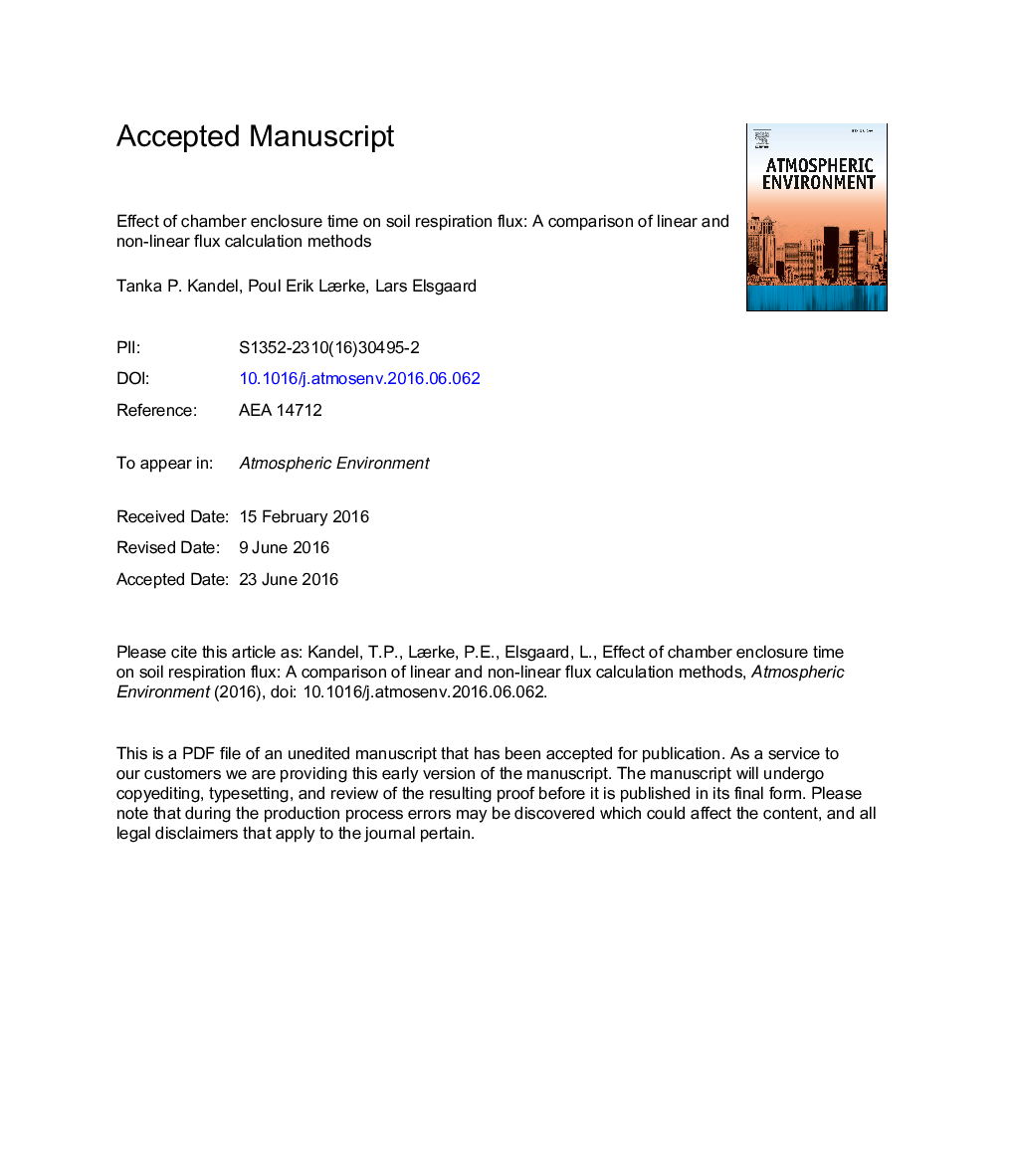| Article ID | Journal | Published Year | Pages | File Type |
|---|---|---|---|---|
| 6336115 | Atmospheric Environment | 2016 | 32 Pages |
Abstract
One of the shortcomings of closed chamber methods for soil respiration (SR) measurements is the decreased CO2 diffusion rate from soil to chamber headspace that may occur due to increased chamber CO2 concentrations. This feedback on diffusion rate may lead to underestimation of pre-deployment fluxes by linear regression techniques. Thus, usually the cumulative flux curve becomes downward concave due to the decreased gas diffusion rate. Non-linear models based on biophysical theory usually fit to such curvatures and may reduce the underestimation of fluxes. In this study, we examined the effect of increasing chamber enclosure time on SR flux rates calculated using a linear, an exponential and a revised Hutchinson and Mosier model (HMR). Soil respiration rates were measured with a closed chamber in combination with an infrared gas analyzer. During SR flux measurements the chamber was placed on fixed collars, and CO2 concentration in the chamber headspace were recorded at 1-s intervals for 45Â min. Fluxes were measured in different soil types (sandy, sandy loam and organic soils), and for various manipulations (tillage, rain and drought) and soil conditions (temperature and moisture) to obtain a range of fluxes with different shapes of flux curves. The linear method provided more stable flux results during short enclosure times (few min) but underestimated initial fluxes by 15-300% after 45Â min deployment time. Non-linear models reduced the underestimation as average underestimation was only about 10% after 45Â min for regular flux curves. For irregular flux curves with a rapid increase in CO2 concentration immediately after chamber deployment it was shown that short enclosure times were prone to overestimation of pre-deployment fluxes, but this was mitigated by longer enclosure times (>10-15Â min).
Related Topics
Physical Sciences and Engineering
Earth and Planetary Sciences
Atmospheric Science
Authors
Tanka P. Kandel, Poul Erik Lærke, Lars Elsgaard,
